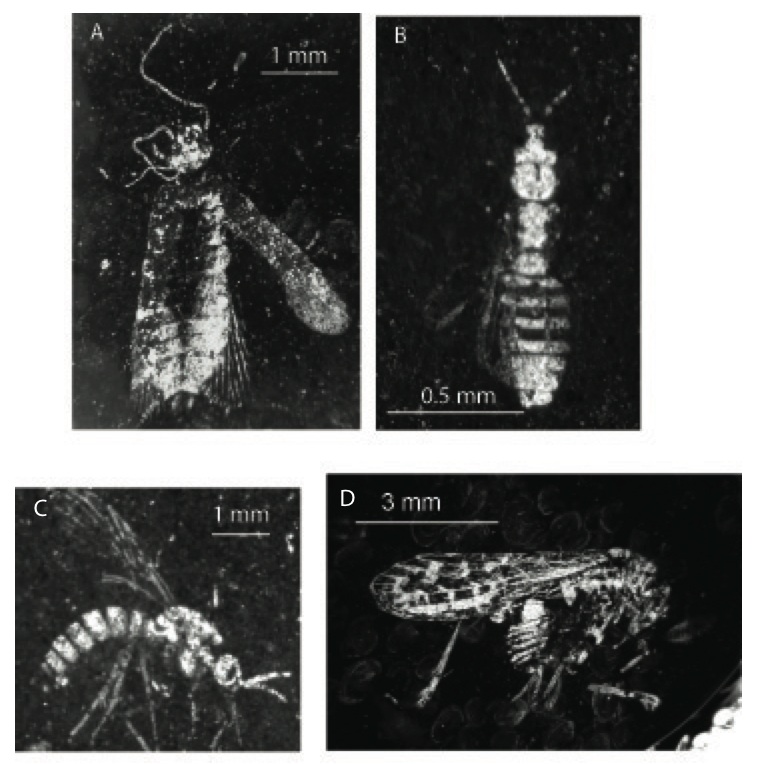
The fossiliferous Triassic sediments exposed in the Virginia Solite Quarry include a 34-mm-thick "insect layer" that is notable for preserving exquisite details, including soft-bodied invertebrates (left) as well as vertebrate remains. This research project describes this unique Lagerstatte and uses sedimentologic and geochemical analyses to interpret the depositional environment as well as the preservation conditions that created this amazing assemblage. This work is among the first attempts to apply detailed geochemical/stratigraphic analysis to the study of Lagerstatte.
Our analysis of these rocks is beginning to illustrate that long-accepted models of rift basin sedimentology may not be applicable across the entire Newark Supergroup. Specifically, we show that dark laminated mudstones do not, in fact, indicate deep, anoxic, lacustrine environments, but instead indicate a shallow, oxygenated, yet toxic lake margin. The absences of bioturbation by plants and benthic organisms as well as the lack of predation on the insects (thus aiding their preservation) is not explained, therefore, by significant water depth, but instead more reasonably considered a result of the chemistry of the water at the lake margin, affected by groundwater seeps, which provide F-, Mg-, and Ca-rich fluids.
While the initial conditions of preservation are remarkable, it is equally impressive that the insect and aquatic dinosaur fossils have survived extensive diagenesis (e.g., dissolution of quartz, coarsening of dolomite, etc.)
For more information on the rift basin sediments at the Solite Quarry, see Liutkus et al., 2010.